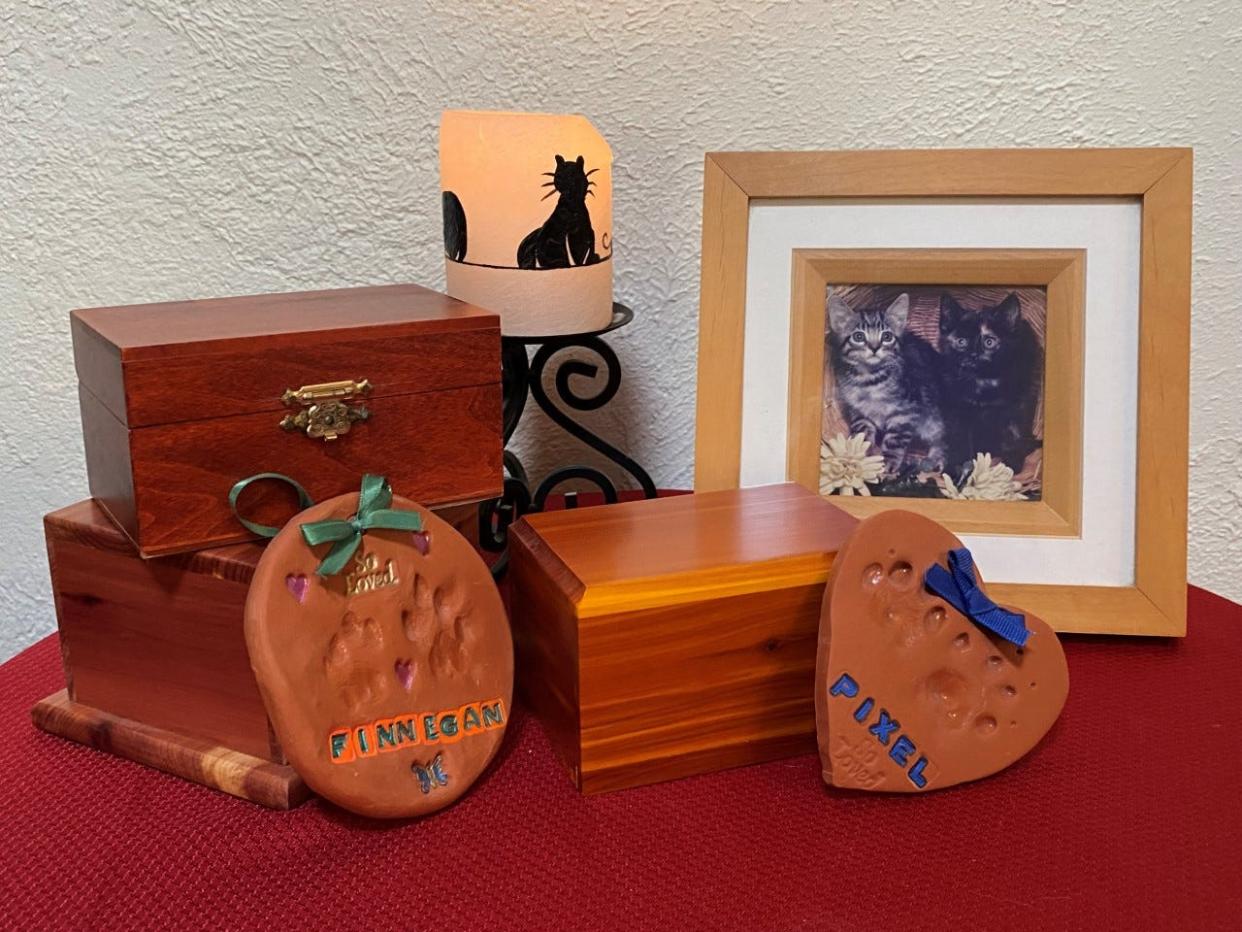Preparing to say goodbye: What to know before the decision to euthanize your pet

Humane euthanasia of a beloved pet is a big, emotional topic, and one short column can’t begin to address the complexities of that decision. A quick Google search will reveal many online resources that explore euthanasia thoroughly. The short message of this column is that, as with most things in life, thinking through the process — and it is a process — well ahead of time can help you navigate just a bit easier when the time nears.
Long before the need arises
Start with the basics by knowing what your veterinarian’s office hours are, what (if any) in-home services are available to clients, and understanding your veterinarian’s euthanasia protocol.
Having a relationship with a trusted veterinarian is important long before your pet’s health declines. When euthanasia becomes a consideration, your veterinarian can’t make the decision for you. However, if your pet has been a patient, they can provide guidance based on their long-term knowledge of your animal and health issues your pet may have or have had and offer a realistic prognosis.
That said, some people are unable to maintain a schedule of regular vet check-ups for their pet because they are geographically isolated or have financial constraints. Knowing your euthanasia options is equally important in either of these cases. Possible options to consider are specialized in-home euthanasia services (Google “in-home pet euthanasia” and your area) or euthanasia at the ASCMV. Carefully read through the websites of any in-home service to learn the specifics of what they offer and reach out to them so you are aware of the potential costs involved. Call the center at 575-382-0018 for cost and information about euthanasia at the ASCMV. Again, it’s best to know what you need to do and what the considerations are ahead of time.
Also ahead of time, think about what you will want to do with your pet’s remains. Burial of a pet anywhere within Las Cruces city limits other than a pet cemetery is prohibited under city ordinances, but Doña Ana County ordinances state an animal may be buried on the owner’s property as long as burial is at least three feet underground. Depending on where your pet is euthanized, private or communal cremation may be options.
Making the decision
The word euthanasia comes from the Greek word euthanatos, or good death. A well-planned euthanasia ensures that family members can say their own personal goodbyes and hopefully decide who will be with the pet during the procedure. It also ensures your pet passes peacefully and not in an emergency situation, or alone and scared, or past the point when your animal is already suffering or in pain. There’s a common saying about euthanasia that a week too early is better than a minute too late.
Again, many online resources can help you navigate this difficult decision (a few are listed below) and most address quality of life issues. Since our pets can’t tell us how they feel, our assessment has to be about what we can conclude based on considerations such as their mobility, interest in eating and drinking, and toileting. Other quality of life issues are how they interact with their human family and other pets in the household. Does your pet still enjoy affection, playtime and bonding time? Clearly, pain that can no longer be alleviated is an important factor. Crying out may indicate pain, but less obvious signs may be avoiding activity other than eating and toileting, no longer climbing stairs or jumping up, or stiffness in their gait.
The best interest of the animal
Ask your veterinarian to help you honestly understand what your animal might be going through. Veterinarians are in the tough position of acting on behalf of the animal but having to accommodate the needs and requests of the human client. When it comes to treatments including euthanasia, I have always trusted my veterinarian to answer me honestly when I ask, “What would you do if this were your animal?” and I take their guidance seriously in my decision-making.
It’s not fair to your pet (or your veterinarian) to demand treatment that may extend your pet’s life but in doing so merely prolong your pet’s suffering. Advances in veterinary medicine have improved the lives, lifespans and therapeutic and palliative care options for countless pets, but the flip side of this is overtreatment beyond what will truly have a positive effect on the animal. Just because you can doesn’t mean you should, and your veterinarian should guide you through what you can realistically expect from any treatment chosen.
Our pets rely on us for everything and, when the time is right, helping them pass peacefully and without suffering is the final gift we can give them. It’s sad to think about, but your pet deserves thoughtful planning for a good death.
A few resources for more information on humane pet euthanasia:
The Massachusetts SPCA (MSPCA): https://www.mspca.org/angell_services/euthanasia/
The Ohio State University Veterinary Medical Center: https://vet.osu.edu/vmc/sites/default/files/import/assets/pdf/hospital/companionAnimals/HonoringtheBond/HowDoIKnowWhen.pdf
Veterinary Partner: https://veterinarypartner.vin.com/default.aspx?pid=19239&id=4951966
More Notes from the ASCMV:
Elaine Stachera Simon writes for the Animal Services Center of the Mesilla Valley. Follow on Facebook (facebook.com/ASCMV), check out ascmv.org or call 575-382-0018.
This article originally appeared on Las Cruces Sun-News: Notes from ASCMV: What to know before the decision to euthanize your pet

